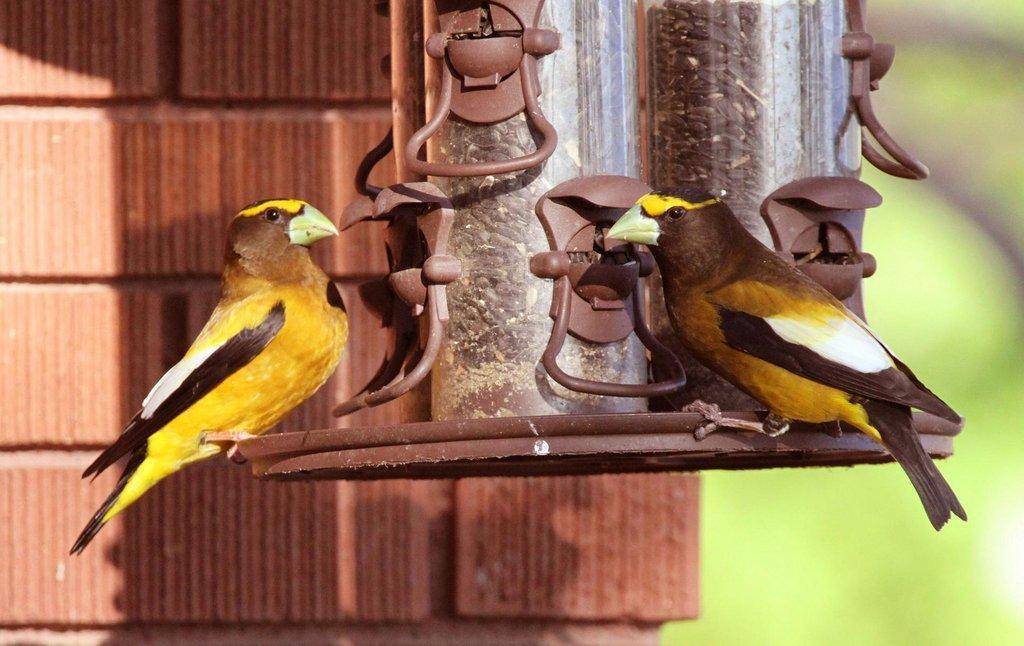DWR News Release
A salmonella outbreak has caused the deaths of numerous songbirds in Washington, Oregon and Idaho over the last few months, and the Utah Division of Wildlife Resources has received an increased number of reports of sick and dead birds near bird feeders in northern Utah.
Salmonellosis is a bacterial disease that is transmitted through direct contact and is commonly spread when birds ingest feed contaminated with infected feces. As such, bird feeders can be a source of disease transmission since birds often congregate at the feeders, particularly during the winter months.
Pine siskins, goldfinches and Cassin’s finches are the birds most commonly affected by salmonellosis, although all birds that frequent bird feeders can be impacted by disease.
Signs of salmonellosis in birds may include ruffled feathers, rapid breathing, lethargy, weakness, neurological signs and diarrhea. These symptoms can eventually result in coma and death, or the birds may remain infected over time and become carriers of the disease.
If you see sick or dead birds in your neighborhood, the DWR requests that you do the following:
- Temporarily take down and remove all bird feeders, water containers and bird baths for at least a month. This will encourage birds to disperse and will help slow the transmission of the disease.
- Use gloves when touching the feeder, clean it thoroughly with soap and water, and disinfect it with 10% bleach solution. Soak it for at least 30 minutes, and then rinse thoroughly and let it dry completely.
- Clean the area under the bird feeder and remove all bird seeds, which could attract birds to the area.
- If you have more than five sick or dead birds in your yard, please contact the nearest DWR office. The DWR may submit some of the birds for disease testing if the deaths are occurring in a new area. If the birds are not being submitted for testing, please use gloves to dispose of any dead birds into a closed plastic bag and place it in a trash can.
Even if you do not see any sick or dying birds in your neighborhood, you can help reduce the risk of disease transmission by doing the following:
- Use bird feeders that are less likely to lead to disease transmission. Feeders made of smooth plastic, steel or glass are easier to clean and disinfect than those with porous or irregular surfaces (like wood).
- Use feeders that prevent the seeds from becoming wet because the food is less likely to spoil if it remains dry.
- Avoid feeders that allow the birds to sit on the food while eating, including platform feeders. Instead, use feeders where birds must perch away from the food to prevent fecal contamination.
- Remove old seeds and feces from the feeder daily. Rake or sweep under the feeder to remove any seeds, feces or shells, and discard them in a trash can where birds can’t access them.
- Spreading feeders over several areas and using smaller feeders will reduce the number of congregating birds, which will reduce the risk of disease transmission.
- Clean feeders, water containers and bird baths regularly (at least weekly) by removing all the seeds, washing the feeders with soapy water, and then soaking them in a 10% bleach solution. Allow the feeder to soak in the solution for 30 minutes before rinsing the bleach off thoroughly and letting the feeder dry completely before reinstalling it outside.
“While regularly cleaning your bird feeders and baths is always recommended to prevent disease transmission, a more rigorous disinfecting schedule is required during an outbreak of salmonellosis, which is why we recommend temporarily removing feeders and water baths,” DWR Wildlife Conservation Biologist Adam Brewerton said. “We all love to see wild birds come to our feeders, but feeders that are not properly cleaned can pose more of a risk than a benefit for birds.”
Learn more about different diseases that impact birds and how to prevent them on the DWR website.

